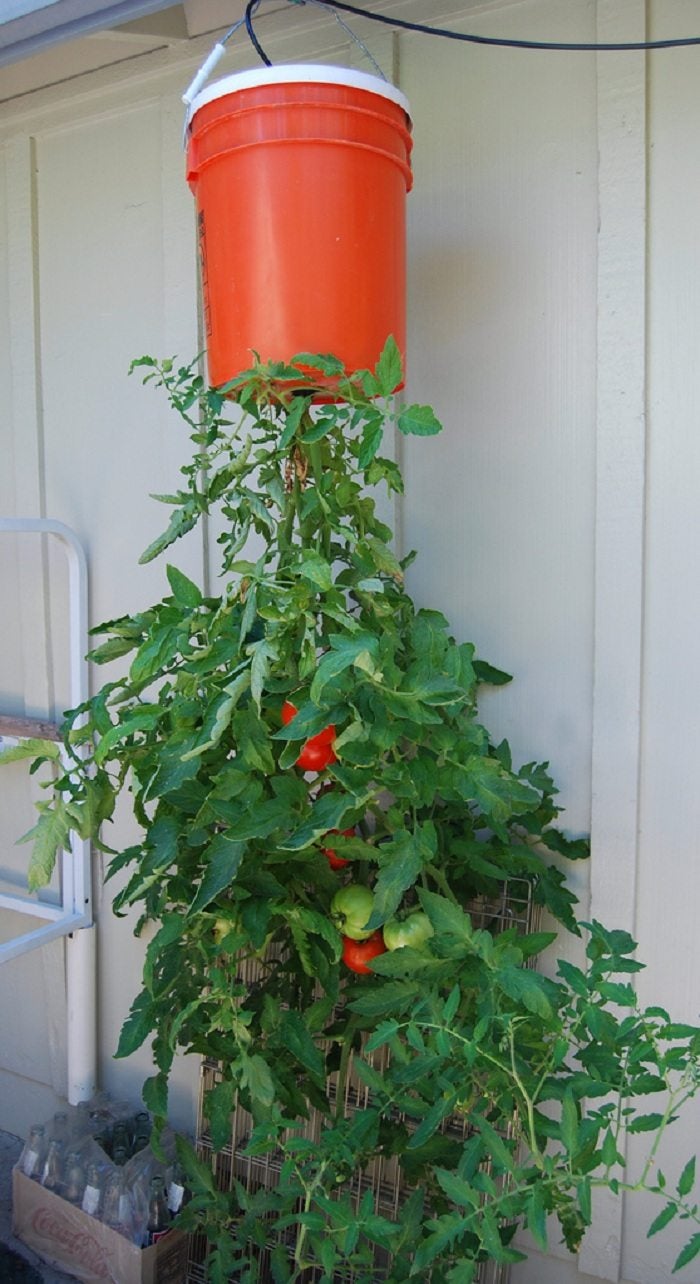Upside-Down Gardening Info: How To Garden Upside Down


Growing plants upside down isn't a new concept. Those inverted tomato systems have been on the market for a while and work okay with good cultivation and watering practices. An upside-down garden allows you to grow in smaller spaces and keeps plants out of the soil where pests, like cutworms, can ravage them. We have some tips on which plants can grow upside down and how to make your own planters.
Why Try Upside-Down Gardening?
You don't have to turn the world on its head to try upside-down gardening. The concept reportedly started in 1998 when a gardener, Kathi Lael Morris, tried it on peppers and tomatoes. The concept worked and has since become a phenomenon. Growing plants upside down has several benefits and may be the method condo and apartment dwellers have been searching for in their smaller gardening spaces. The benefits and drawbacks of growing in inverted containers can fill this page. However, we will focus on just a few of the highlights to illuminate the issues. The plus factors are:
- Saves space
- Helps deter some pests
- Prevents many fungal diseases
- Reduces the need to stake or cage
- Increases light exposure
- Water and nutrients are efficiently delivered to the roots
This all sounds great, but there are also some reasons why an upside-down garden is not practical:
- Limits heavy crops
- Moisture evaporates quickly
- May limit the sun exposure due to overhangs and roof eaves where hung
- Natural plant hormones, auxins, cause stems to grow upward, developing a U shape and fragile stems
- Planters can be difficult to plant
- Limits the types of plants you can grow
How to Garden Upside Down
Growing plants upside down is certainly worth trying. First, you have to decide if you want to buy one of those fabric models or make your own. If you have a location, such as a frame you have built that will hold heavy plants and their soil, you can make planters out of large garden buckets. You will need strong hooks and screws to mount the container. An alternative is to purchase steel heavy gauge brackets from which to suspend your planter. For easy upside-down containers, simply make a hole in the bottom of the bucket just large enough to push the plant through. Then fill the bucket with your soil, push in the plant, and hang the container from the handle on your hook, bracket, or other supporting device.
Which Plants Can Grow Upside Down?
If you are really creative, it is probably possible to grow watermelons upside down, but it would take more work than in-ground growing and limit the number of fruits. Practically speaking, smaller yield crops work best in inverted planters. Cherry and grape tomatoes, smaller pepper varieties, eggplants, cucumbers, beans, herbs, strawberries and other trailing plants, and some houseplants work well. If you are growing a crop plant, think dwarf fruits and veggies that will not drag down the plant, or its container, and are harvested successively instead of all at once. Upside down growing is certainly a phenomenon and an interesting practice, but it doesn't work for every plant and may take a bit more effort for some species.
Sign up for the Gardening Know How newsletter today and receive a free copy of our e-book "How to Grow Delicious Tomatoes".

Bonnie Grant is a professional landscaper with a Certification in Urban Gardening. She has been gardening and writing for 15 years. A former professional chef, she has a passion for edible landscaping.